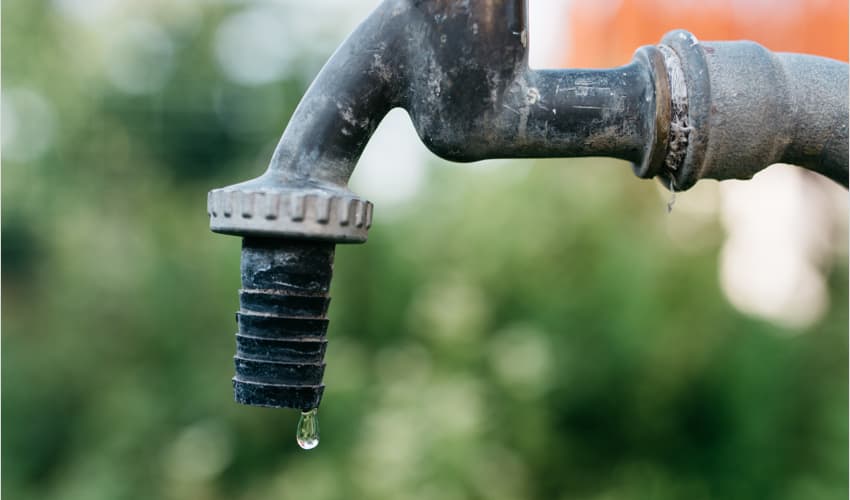The House's Common Common Leak Factors: Analysis
The House's Common Common Leak Factors: Analysis
Blog Article
We have unearthed this post relating to Top Causes of Home Water Leaks directly below on the internet and figured it made sense to discuss it with you on this page.
Leaks not only trigger waste of water however can additionally cause unnecessary damage to your home and also advertise undesirable organic growth. By looking and recognizing for day-to-day circumstances that cause leaks, you can safeguard your house from future leakages and unneeded damages.
Elbowing in roots
The majority of water leakages start outside the home rather than inside it. You may notice wet spots or sinkholes in your backyard, and that may suggest that tree roots are attacking water lines triggering water to permeate out.
Rusty water systems
This might be the reason of discoloration or bending on your water pipelines. If our plumbing system is old, think about changing the pipelines given that they are at a greater danger of corrosion than the more recent designs.
Malfunctioning Pipe Joints
The factor at which your pipes link is often the weakest link in the waterline. Pipe joints can deteriorate gradually, resulting in water leaks. Unfortunately, the majority of pipe joints are not conveniently visible. If you have loud pipes that make ticking or banging noises, especially when the warm water is switched on, your pipe joints are probably under a great deal of stress. It is advisable to have your plumber examine your system once a year.
Instantaneous temperature modifications.
Severe temperature level modifications in our pipelines can create them to broaden and contract suddenly. This expansion and tightening may trigger fractures in the pipelines, particularly if the temperature are below freezing. It would be best if you watched on exactly how your plumbing works. The existence of the previously pointed out situations often suggests a high risk.
Poor Water Connectors
At times, a leakage can be caused by loosened pipes as well as pipelines that supply your appliances. More often than not, shifting is what triggers the loose water Links. You could discover when it comes to a cleaning equipment, a tube might spring a leak because of shaking during the spin cycle. In case of a water links leak, you might see water running directly from the supply line or puddles around your appliances.
Clogged Drains
Clogged drains pipes could be irritating as well as inconveniencing, but they can occasionally wind up creating an overflow leading to burst pipes. Keep removing any materials that may go down your drains pipes that could block them to prevent such hassles.
All the above are reasons for leakages but not all water leaks arise from plumbing leakages; some leaks may come from roof leakages. All leaks ought to be repaired promptly to stay clear of water damage.
Leakages not just trigger waste of water yet can also create unnecessary damages to your residence as well as advertise unwanted organic growth. By recognizing and looking for everyday scenarios that trigger leakages, you can protect your house from future leaks and unneeded damages. Today, we will certainly look at 6 leak creates that might be triggering your pipes to leak.
At times, a leak can be caused by loosened pipes and also pipes that supply your home appliances. In situation of a water links leak, you might discover water running straight from the supply line or puddles around your devices.
How To Check For Water Leak In Your Home
How To Check for Leaks
The average household's leaks can account for nearly 10,000 gallons of water wasted every year and ten percent of homes have leaks that waste 90 gallons or more per day. Common types of leaks found in the home are worn toilet flappers, dripping faucets, and other leaking valves. These types of leaks are often easy to fix, requiring only a few tools and hardware that can pay for themselves in water savings. Fixing easily corrected household water leaks can save homeowners about 10 percent on their water bills.
To check for leaks in your home, you first need to determine whether you're wasting water and then identify the source of the leak. Here are some tips for finding leaks:
Take a look at your water usage during a colder month, such as January or February. If a family of four exceeds 12,000 gallons per month, there are serious leaks.
Check your water meter before and after a two-hour period when no water is being used. If the meter changes at all, you probably have a leak.
Identify toilet leaks by placing a drop of food coloring in the toilet tank. If any color shows up in the bowl after 10 minutes, you have a leak. (Be sure to flush immediately after the experiment to avoid staining the tank.)
Examine faucet gaskets and pipe fittings for any water on the outside of the pipe to check for surface leaks.
Undetected water leaks can happen without the home or business owner even realizing. If you suspect a water leak, but not able to find the source. It is time to contact a professional water leak detection service, The Leak Doctor.
How To Find a Water Leak In Your Home
https://www.leakdoctor.com/blog/How-To-Check-For-Water-Leak-In-Your-Home_AE197.html

As a reader about Top Causes of Home Water Leaks, I was thinking sharing that post was a great idea. Appreciated our content? Please share it. Let other people discover it. I value reading our article about Top Causes of Home Water Leaks.
Immediate attention? Call! Report this page